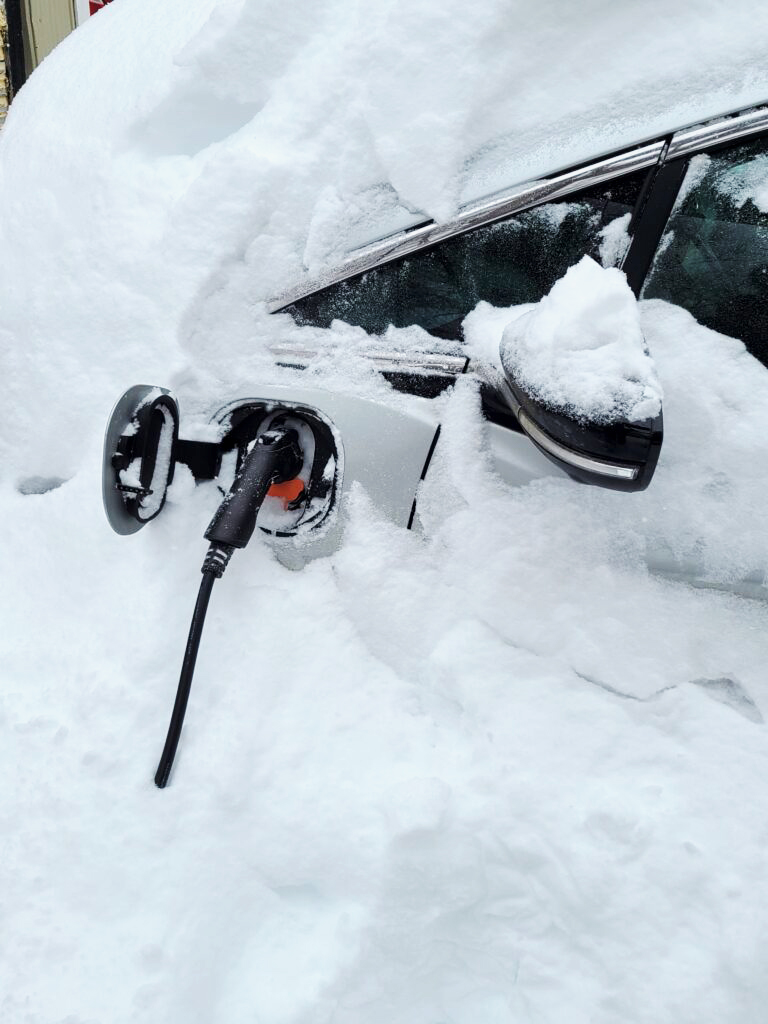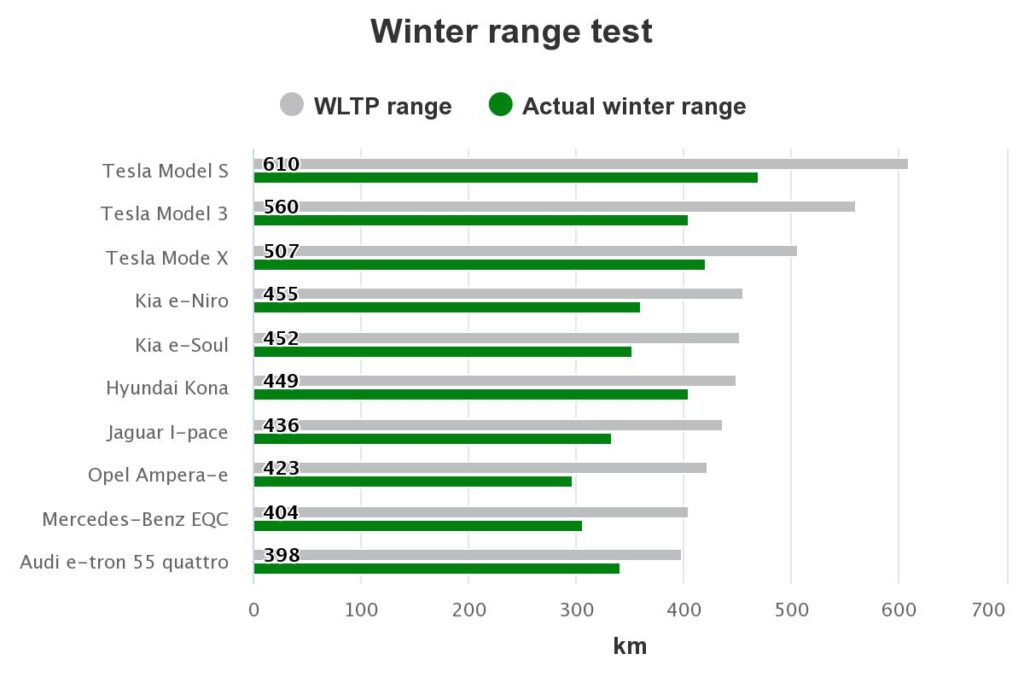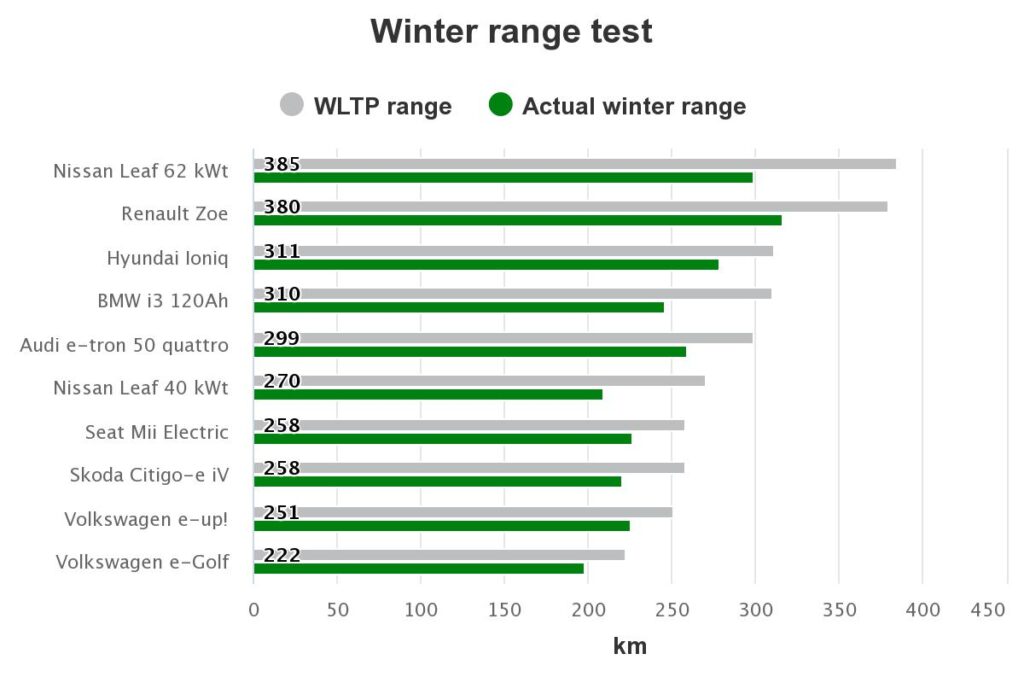
As I dug our Chevy Bolt out of a snowstorm this week I remembered the questions I had about winter performance before we bought an electric car. Our experience over two winters agrees with the research I did at the time: EV’s perform fantastically well in winter, at temperatures well below -30C in my experience (I don’t even know if there is a lower limit), but there are some things you should know.
Will your electric car start in the winter? 100% yes, at temperatures when many of your neighbours’ internal combustion powered cars may be frozen blocks of metal in the driveway. And it will warm up faster than you expect, because electric cars have a heater (vs waiting for waste heat from the engine to build up). Throw in some heated seats and a heated steering wheel, common accessories in EVs, and you’re in winter bliss. My wife and I fight over the Bolt in all seasons (we also own a Prius V without a plug).
The biggest reality check is winter range loss. We knew about it, but were shocked at how much range declines in our Chevy Bolt. Our summer range can reach 400 km or more (with AC blasting on the highway 350 km is more realistic), but in winter it can drop to 200 km. The Bolt, it turns out, is literally the worst for winter range loss. A study in Norway found that winter range loss of EVs averaged 19%, but varied from 10% to 30% – so choice of EV matters. The worst performer was the Opel Ampera, which is basically a Chevy Bolt in European clothing. Tesla was next worst, though the intial ranges on Telsas are so high that the final range is still good. Hyundai and Audi models had some of the lowest winter range losses. That’s interesting to me, because the Hyundai Ioniq 5, with its charge time of around 20 minutes (from 10 to 80%), is one of the electric car models that seems to be challenging Tesla head on. The Ioniq 5 wasn’t included in the study as it is too new, but judging by it’s predecessors it could perform well – although Hyundai opted to leave out a rear windshield wiper, which is hardly a winter selling feature. Many of the new EVs have a heat pump, which is far more efficient than resistance electric heating (and doubles as the AC unit). On some it is optional or unavailable, so make sure you’re getting a heat pump if you live in the snowbelt.


As I mentioned at the beginning we just had a real Canadian winter storm that dropped almost half a meter of snow in a day. Once the plows had made their first run through town I took the Bolt out and it performed well, being front wheel drive with lots of weight for traction. Of course we have our winter tires on, and this is critical, since the low friction tires that extend the Bolt’s range in summer make the car virtually undriveable in snow. It performed well, up to a point – this week’s winter dump was deep enough to teach me something else about the car, when I tried to follow another car’s tracks into an unplowed parking lot. It was a rookie mistake, the low clearance Bolt never had a chance and I immediately got stuck. Initially I wasn’t worried, getting stuck in snow is a rite of passage in Canada, I know some tricks. The key to getting unstuck in snow is to avoid your tires spinning fast and polishing the snow and ice below them, and you need to rock forward and backwards until you can get enough momentum to pop out of the snowbank. If you have a manual transmission you have complete control and can use the clutch to gently rock the car. If you have an automatic transmission you have to alternate between forward and reverse and pray, or hope someone offers a push (which someone always does). An EV is, if anything, worse than an automatic. The instant power that makes electric vehicles so sporty and fun to drive is not an asset in a snowbank, though arguably it’s more precise than many automatics. All that to say don’t drive like you’re in a truck, and consider throwing some traction aids in the back of the car, maybe even a shovel. I eventually did get free with some awkward digging (no I didn’t have a shovel, or traction aids) and a lot of rocking.
Once you’ve driven an EV you’ll never want to drive an old dinosaur ICE car again, even in winter. Just research winter range loss when you’re making your choice, get your winter tires, and enjoy the future of driving, it’s awesome.

Great article! Do you think EV cars will always have range loss issues in colder weather?
Hi Kat, I suspect there will always be some winter range loss, but with some models already at only 10% loss it’s not such a big deal. There’s talk from the Canadian parts makers of developing a truly Canadian EV, and one of the things they mention is better preconditioning for cold weather, which I assume means warming up the batteries more aggressively while it’s plugged in just before you drive it – that should help extend range. Fast charging times also suffer in very cold weather (this is talked about EV forums, especially around the Ioniq 5 ultra fast charge), and there’s a call for automakers to have a battery warming feature you could trigger while driving, before you get to the charger. Those are just a couple of the details that will hopefully get sorted out and get us closer to ideal winter performance.
Hyundai is now implementing a battery conditioning feature while en route, to improve charge times in winter: “the new battery conditioning feature will enable IONIQ 5 to automatically adapt its battery temperature while travelling to ensure optimal charging conditions when reaching the charging point, improving real-life charging performance in hot or cold ambient conditions. This function activates automatically when a charging point is entered into the vehicle’s navigation system using connected routing.” https://www1.hyundai.news/uk/model-news/battery-enhancements-and-specification-changes-for-hyundai-ioniq-5/